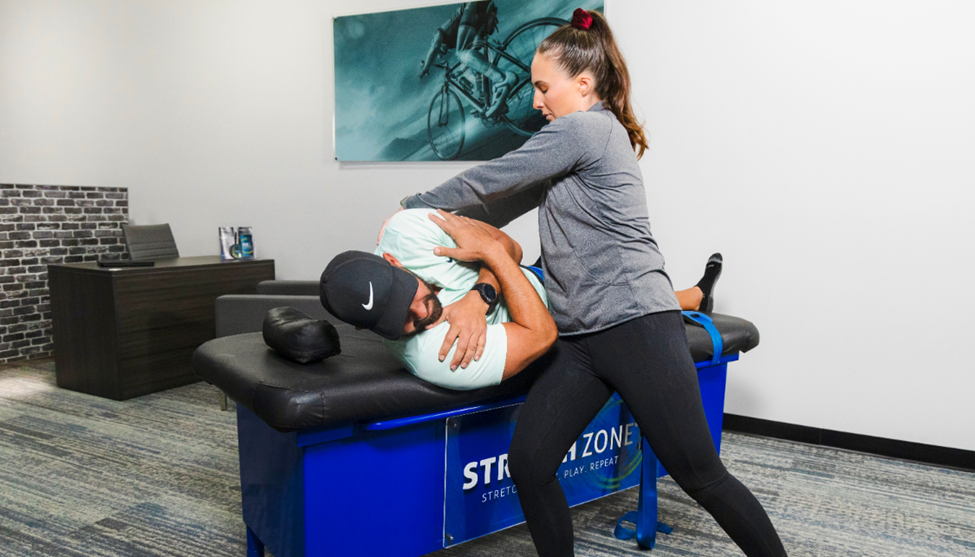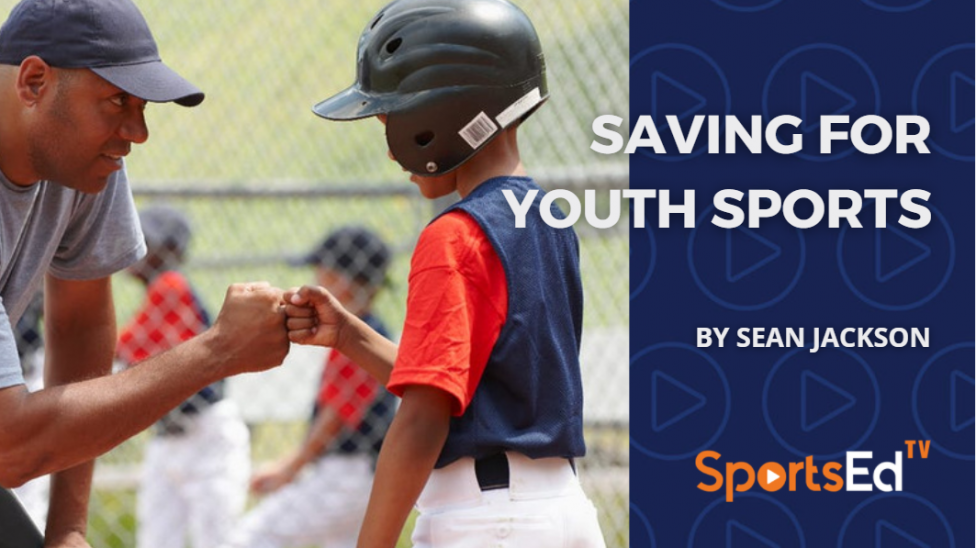Golf, Stretching
Welcome and thanks for visiting...

Maximizing Golf Performance: The Impact of Practitioner-Assisted Stretching on Power, Flexibility, and Swing Mechanics
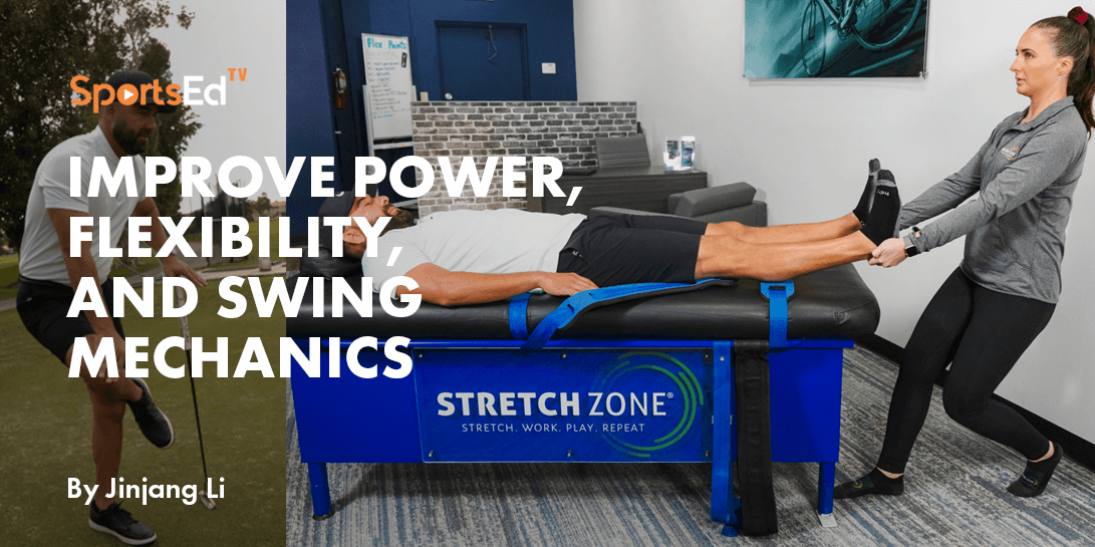
Golf is not just a sport but an art that melds precision, power, and the intricate mechanics of the human body. To master the golf swing—a movement that demands both finesse and strength—understanding the interplay of the core muscle groups involved is paramount. This comprehensive guide explores the essential muscles that power the golf swing and the pivotal role of static stretching and introduces effective assisted stretching techniques to enhance your performance on the green.
The Anatomy of a Golf Swing: Key Muscles at Play
The golf swing is an orchestrated motion requiring the seamless coordination of various muscle groups. Each phase of the swing, from the initial takeaway to the final follow-through, relies on the dynamic interaction of these muscles to achieve the perfect balance of accuracy and distance.
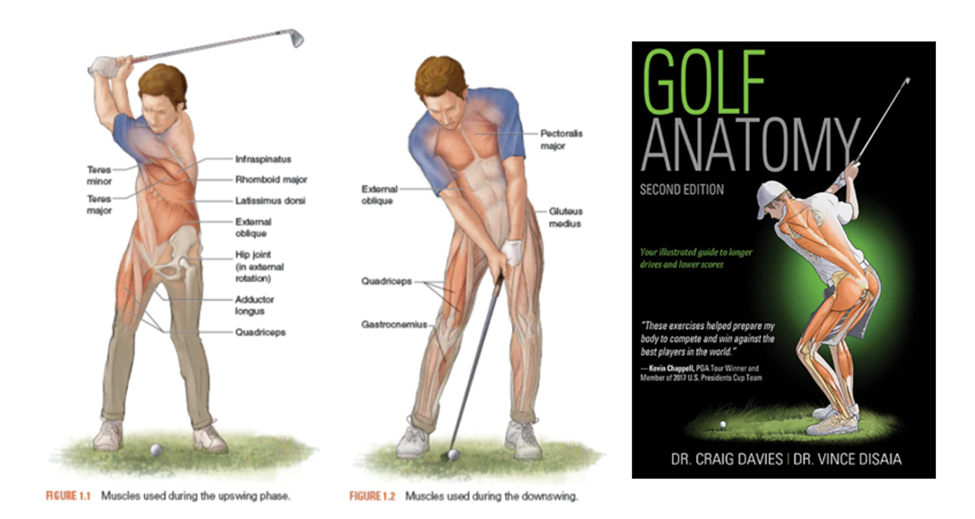
Copyright: Golf Anatomy 2nd Edition by Craig Davies, Vince DiSaia
Leg and Hip Powerhouses
- Quadriceps: These muscles are vital for knee extension, providing the stability needed during the swing.
- Hamstrings: Working in tandem with the quadriceps, the hamstrings offer knee flexion and stability, crucial for maintaining posture throughout the swing.
- Glutes (Gluteus Maximus, Medius, Minimus): The glutes are the powerhouse of the golf swing, generating the force required for powerful hip movements.
- Hip Flexors: These muscles play a significant role in the dynamic action of lifting the leg, aiding in the overall fluidity of the swing.
Trunk Stability and Power
- Abdominals: Comprising various muscles, the abdominal region is essential for rotational stability and movement and acts as the core of the golf swing.
- Lower Back Muscles: These muscles provide the necessary support and flexibility for the rotational movements integral to the swing.
Grip Strength and Control
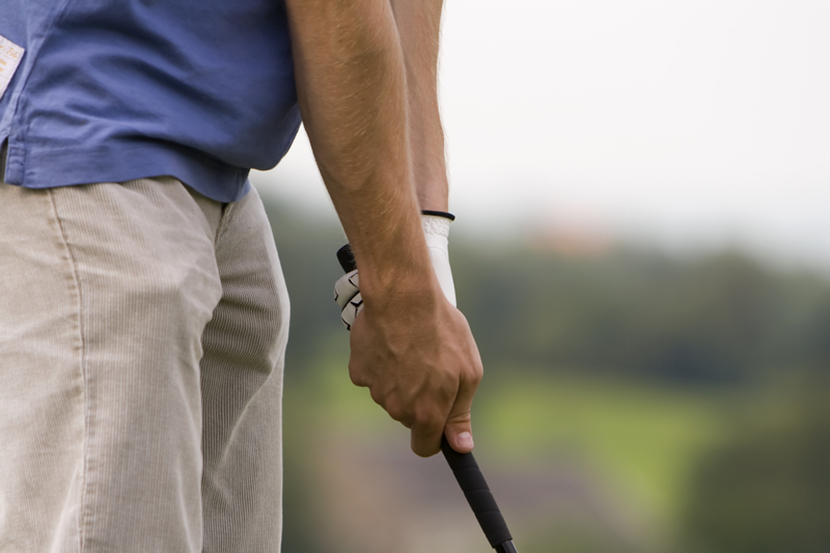
- Forearm Muscles: The forearm muscles govern the control of the golf club and, thus, the precision of the swing.
Supporting Muscle Groups
- Shoulders (Deltoids): These muscles are responsible for arm rotation and elevation, key components of the swing's arc.
- Chest (Pectoralis Major): The chest muscles aid in the arm movement and contribute to the rotational force of the swing.
- Upper Back (Trapezius, Latissimus Dorsi): These muscles support the power and rotation necessary for an effective swing.
- Wrists (Flexors and Extensors): The wrists play a crucial role in club control, influencing both the swing's precision and power.
A comprehensive understanding of these muscle groups highlights the necessity of a well-rounded training regimen that emphasizes strength, flexibility, and coordination.
The Science Behind Static Stretching in Golf
The concept of the "X-Factor Stretch," as explored in studies like those conducted by Phillip J. Cheetham and his team, sheds light on the biomechanical aspects of the golf swing, particularly the downswing. This research reveals that a significant increase in the rotational separation between the hips and shoulders early in the downswing—the X-Factor Stretch—is more critical for an efficient and powerful swing than the magnitude of the X-Factor at the top of the backswing. Incorporating static stretching routines to enhance flexibility and range of motion, especially in the hips and shoulders, can lead to a more effective X-Factor Stretch, thus improving swing efficiency and power.
Upper-Body Flexibility: A Gateway to Enhanced Golf Performance
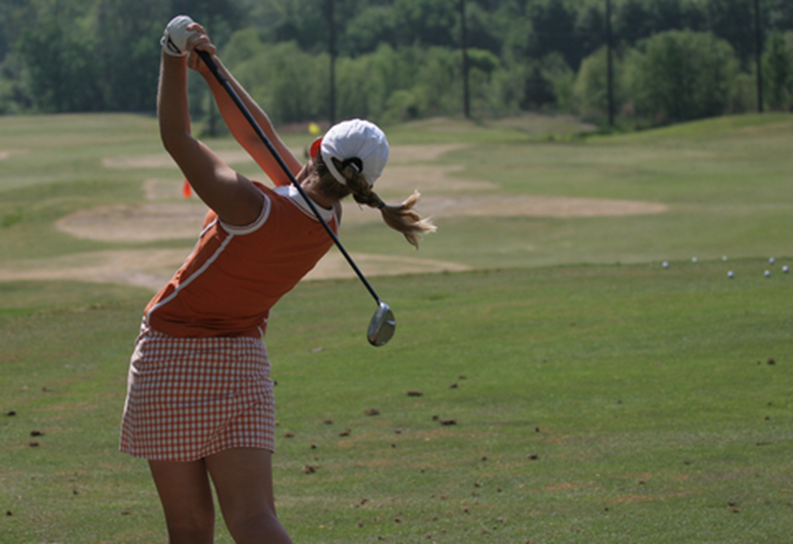
An illustrative study on the impact of upper-body flexibility exercises on a female amateur golfer's performance provides valuable insights:
- Open Book Drill: Targets chest and shoulder flexibility, key areas for a smooth swing transition.
- Reach Under Drill: Enhances shoulder mobility and thoracic rotation, contributing to a wider range of motion.
- Prayer Stretch: Improves flexibility in the back and shoulders, which is crucial for maintaining posture.
- Torso Turns with a Side Bend: Increases rotational mobility and lateral flexibility of the torso, aiding in the swing's fluidity.
When performed consistently, these exercises led to notable improvements in the golfer's performance metrics, such as an increased maximum rotation angle of the upper body, enhanced X-factor, improved clubhead speed, and greater carry distance. These findings underscore the potential of upper-body flexibility exercises and regular golf swing practice to boost golf performance significantly.
The Interplay of Stretching and Golf: Enhancing Your Game
Golf may appear to be a low-impact sport, but it encompasses a wide array of physical activities, including swinging, walking, and bending. Each phase of the golf swing, from the takeaway to the follow-through, engages different muscle groups, underscoring the importance of a comprehensive stretching regimen.
Breaking Down the Golf Swing

- Takeaway: Initiates the swing with shoulder rotation, wrist stability, and core engagement.
- Backswing: Elevates the club, engaging the shoulders, wrists, core, and leg muscles for balance.
- Transition: Marks the shift from backswing to downswing, placing emphasis on the lower back and maintaining a rotated torso.
- Downswing: The critical phase where the body uncoils, engaging the shoulders, hips, and legs, culminating in the club meeting the ball.
- Follow Through: Ensures the swing's completion and ball trajectory, relying on balance from the legs, hips, abdomen, and shoulders.
Understanding these mechanics highlights the integral role of flexibility and muscle strength in optimizing each swing phase, ultimately enhancing driving distance and accuracy.
The Comprehensive Benefits of Practitioner-Assisted Stretching
Practitioner-assisted stretching transcends traditional stretching by offering a personalized and more effective stretching experience. It enables deeper stretches, bypassing the body's natural protective reflexes, thus unlocking a greater range of motion. Practitioner-assisted stretching is particularly beneficial for golfers due to its tailored approach, which focuses on areas most crucial for golf, including:
- Back Twists: These stretches release tension in the back, which is crucial for maintaining balance and weight distribution during the swing.
- Core Twist Stretches: Develop flexibility and strength in the core, which is vital for the rotational movements of the swing.
- Hip Stretches: Enhance hip flexibility and balance, foundational for the twisting motions prevalent in golf.
- Hamstring Extensions: Improve hamstring flexibility, supporting overall mobility and back health, essential for a powerful swing.
- Shoulder Openers: Specifically target the deltoids and surrounding shoulder muscles, which are pivotal for controlling the swing arc and ensuring fluid arm rotation. These stretches can significantly increase the range of motion in the shoulders, contributing to a wider swing arc and potentially greater driving power.
- Glute Stretches: Target the gluteal muscles, which are key for stability, power generation, and injury prevention during the golf swing. Strengthening and stretching the glutes can lead to a more stable base, allowing for a more powerful and controlled swing.
The Holistic Impact of Stretching on Your Golf Game
Stretching not only improves the mechanics of your golf swing but also offers extensive benefits for your overall health and mobility. Practitioner- assisted stretching can lead to significant improvements in back health, core strength, wrist flexibility, hamstring mobility, and shoulder nimbleness. These enhancements translate directly to improved golf performance, allowing for more consistent swings, increased driving distance, and greater accuracy.
By embracing a holistic approach that combines an understanding of the key muscles involved in a golf swing, the benefits of static stretching, and the implementation of targeted assisted stretching exercises, golfers can significantly improve their performance. This comprehensive strategy not only refines the technical aspects of the golf swing but also contributes to the golfer's overall physical well-being, ensuring longevity in the sport. Engaging in this multifaceted training approach empowers golfers to elevate their game to new heights, achieving both immediate improvements on the course and long-term health benefits.




